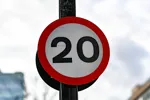Self-employed construction company boss Gary Hart was convicted at Leeds Crown Court last week on 10 counts of causing death by dangerous driving, following the tragedy in February.
The outcome of the case coincided with a report which revealed more than a third of high mileage drivers had fallen asleep at the wheel.
The Green Flag Report on Safe Driving, published in partnership with Brake, found 35% of drivers who cover more than 40,000 miles a year had fallen asleep at the wheel, compared to 14% of all other drivers.
The jury in the Selby case heard how Hart had set out in the early morning on a 145-mile journey from his home in Lincolnshire, having had no sleep. He fell asleep at the wheel of his Land Rover and drifted off the motorway, down an embankment and on to the east coast main line.
Shortly afterwards, an express train hit his car and was derailed, before colliding with a goods train. Six passengers and four rail crew died in the accident. Hart denied the charges, claiming he could go 36 hours without sleep.
Driver fatigue is estimated to play a significant part in up to 25% of accidents on motorways and roads. Research has shown that someone driving between 4am and 6am was 13 times more likely to have a sleep-related accident than someone driving between 10am and midday, or from 8pm to 10pm.
This week, the Royal Society for the Prevention of Accidents said driving while tired was as bad as drinking and driving.
Kevin Clinton, RoSPA head of road safety, said: 'Drivers know they are tired and yet they put their own lives and those of other road users at risk because it is more convenient for them to do so.'
Legal expert David Faithful, of solicitor Amery-Parkes, warned: 'If Hart had been employed, the police would have investigated the employer as much as the employee. Unless the employer could show it had met its duty of care to that driver, it could be put in a difficult situation.'
















Login to comment
Comments
No comments have been made yet.